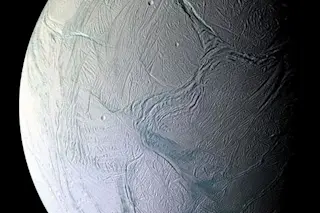NASA's Solar Dynamics Observatory spacecraft captured this animation of a solar prominence on August 13, 2018. (Source: NASA) In my ongoing hunt for cool imagery to feature here at ImaGeo, I regularly check to see what NASA's Solar Dynamics Observatory spacecraft has been seeing on the Sun. The animation above is one of SDO's more recent captures. It shows an eruption of material rising up along invisible magnetic field lines, twisting, and then falling back down, all over a course of two hours on August 13. The feature is known as a solar prominence.
A representation of a 3D model of magnetic fields inside a solar prominence. (Source: NASA) A solar prominence occurs when two points on the Sun's photosphere — essentially its surface — inject plasma along magnetic field lines. (Plasma is the fourth state of matter. Read more about it here.) As the plasma rises up from those ...














